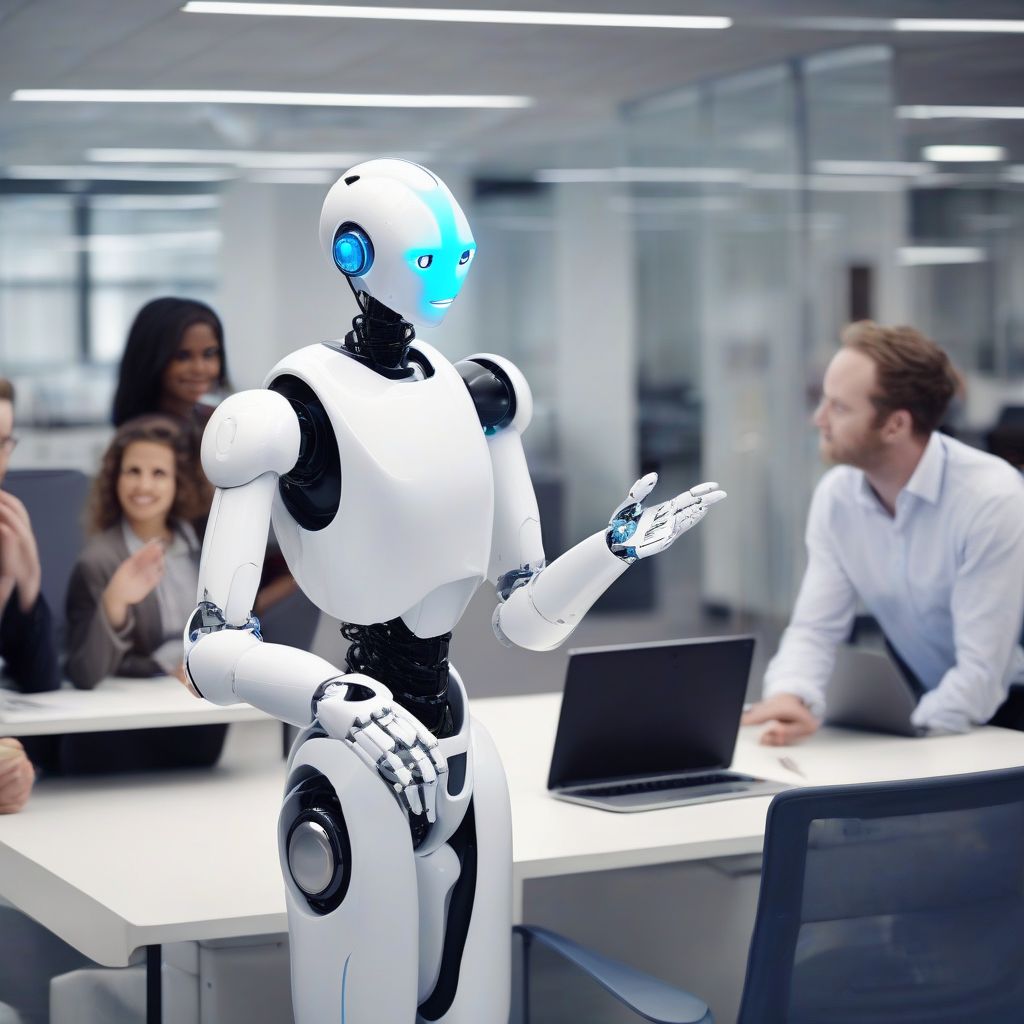Remember the Jetsons’ Rosie, a robot maid who could clean, cook, and even hold a conversation? What was once a futuristic fantasy is becoming a tangible reality thanks to the incredible advances in humanoid robot development. This field, brimming with innovation and driven by brilliant minds, is rapidly changing how we perceive robots and their potential role in our lives.
From Clunky Machines to Graceful Imitations: A Look at How Far We’ve Come
Early humanoid robots, often relegated to the realm of science fiction, were clunky, limited in their abilities, and far from the sleek, agile machines we see today. But over the past few decades, advancements in areas like artificial intelligence, material science, and motion control have propelled humanoid robots from the pages of comic books to research labs and, increasingly, our daily lives.
One of the most significant breakthroughs has been in the area of locomotion. Early robots struggled to walk on two legs, often requiring complex mechanisms and still appearing jerky and unnatural. Now, thanks to advanced actuators, sensors, and algorithms, robots like Boston Dynamics’ Atlas can navigate uneven terrain, jump, and even perform backflips with an agility that rivals humans.
More Than Just Mechanics: The Growing Sophistication of Robot Brains
Beyond physical capabilities, the “brains” of humanoid robots are also undergoing a revolution. Advancements in artificial intelligence (AI), particularly in areas like machine learning and deep learning, are enabling robots to learn from their experiences, adapt to new situations, and interact with their environment in increasingly sophisticated ways.
Robots are now capable of recognizing and responding to human emotions, engaging in basic conversation, and even performing complex tasks that require decision-making and problem-solving skills. This leap in cognitive abilities is opening up new possibilities for humanoid robots in fields like healthcare, education, and customer service.
The Future is Now: Real-World Applications of Humanoid Robots
While still in their early stages, humanoid robots are already making their mark in various sectors:
- Healthcare: Robots are assisting surgeons in performing complex procedures, providing companionship to the elderly, and even aiding in rehabilitation for patients with physical disabilities.
- Manufacturing: Humanoid robots are being deployed in factories to work alongside human workers, performing repetitive or dangerous tasks with precision and efficiency.
- Search and Rescue: Robots are being used in disaster zones to locate survivors, assess damage, and even deliver supplies to areas inaccessible to humans.
These are just a few examples of how humanoid robots are stepping out of the lab and into the real world, offering practical solutions to real-world challenges.
Ethical Considerations: Navigating the Complex Relationship Between Humans and Robots
As humanoid robots become more advanced and ubiquitous, it’s crucial to address the ethical considerations surrounding their development and deployment. Questions about job displacement, data privacy, and the potential for misuse of such advanced technology require careful consideration and ongoing dialogue.
Establishing clear ethical guidelines and regulations for the development and use of humanoid robots will be crucial to ensuring their responsible integration into society.
 Humanoid Robot Interaction
Humanoid Robot Interaction
The Road Ahead: Exciting Possibilities and Unanswered Questions
The field of humanoid robot development is brimming with possibilities. As technology continues to advance at an unprecedented pace, we can expect even more impressive breakthroughs in areas like:
- Artificial General Intelligence (AGI): Achieving AGI, where robots possess human-level cognitive abilities, remains the holy grail in the field of AI.
- Biomimicry: Researchers are increasingly drawing inspiration from nature to develop robots that move and interact with their environment in more organic, lifelike ways.
- Human-Robot Collaboration: The future likely holds a world where humans and robots work together seamlessly, each leveraging their strengths to accomplish shared goals.
While the future of humanoid robots is full of promise, it also comes with a degree of uncertainty. How these advancements will shape our society, economy, and even our understanding of what it means to be human are questions that we will grapple with for years to come.
Conclusion: Embracing the Future, One Step at a Time
The rapid advancements in humanoid robot development are both exciting and challenging. These sophisticated machines have the potential to revolutionize our lives, offering solutions to complex problems and creating new opportunities in countless fields.
As we stand on the cusp of this new era, it is essential to approach the development and integration of humanoid robots with a balanced perspective. By embracing both the potential benefits and addressing the ethical concerns, we can strive to create a future where humans and robots coexist and collaborate to build a better tomorrow.
What are your thoughts on the future of humanoid robots? Share your opinions and insights in the comments below!
[amazon bestseller=”robotics”]
